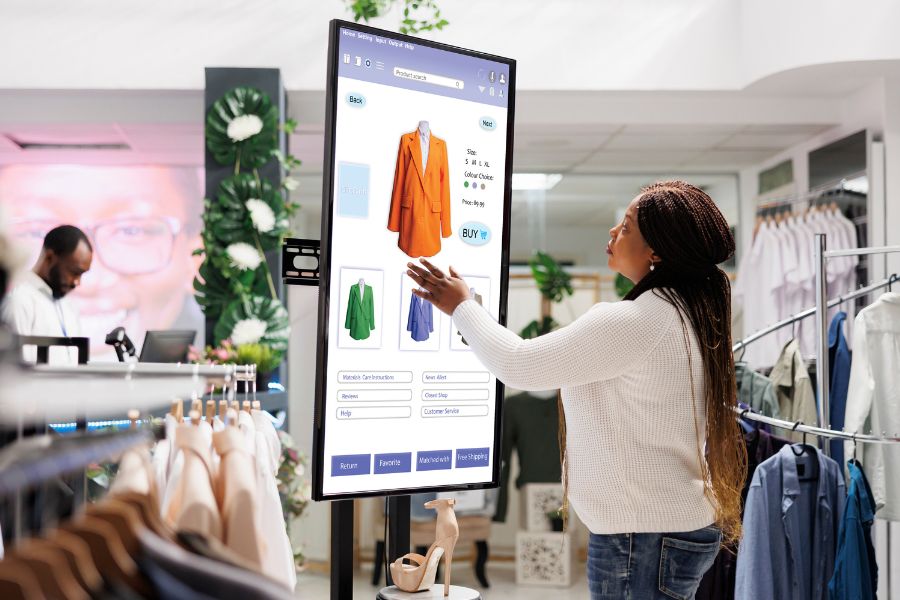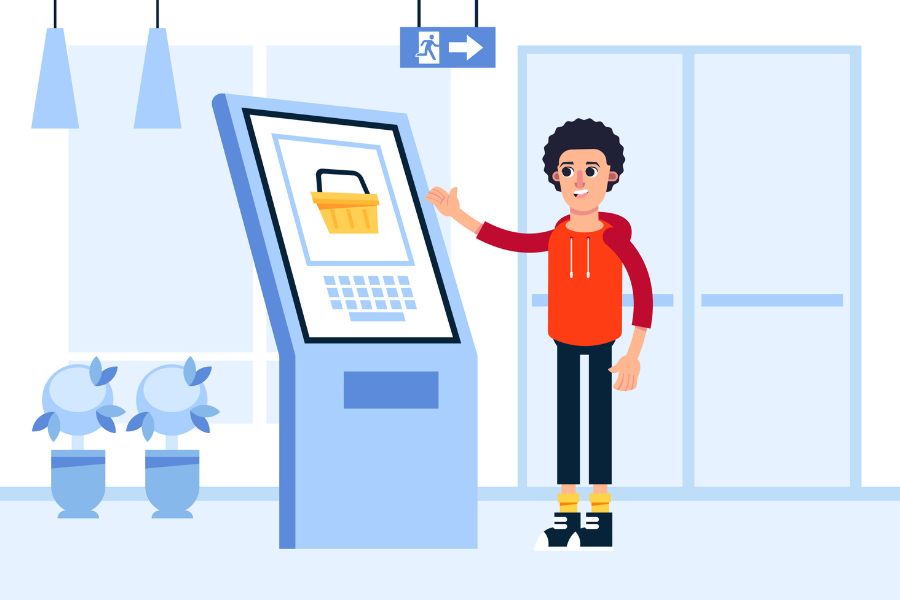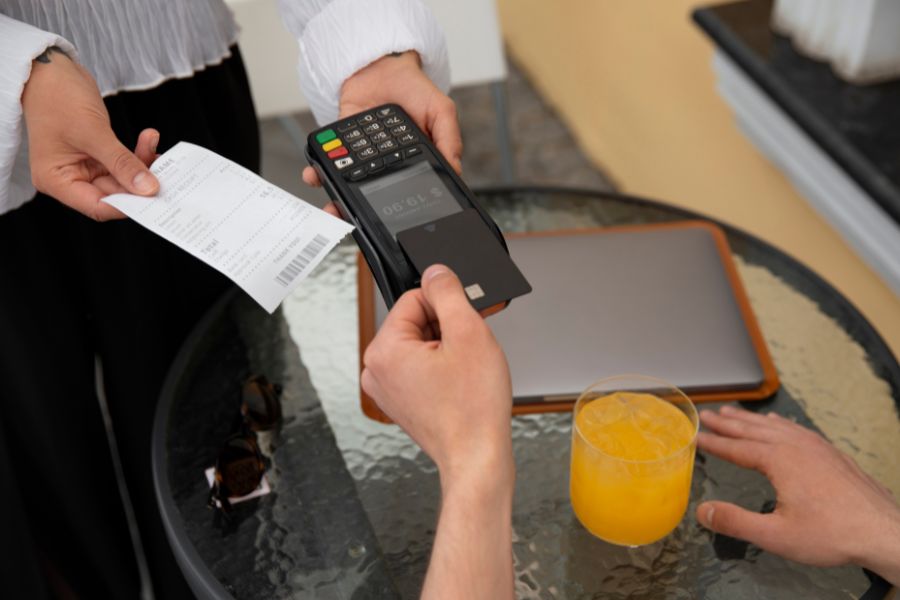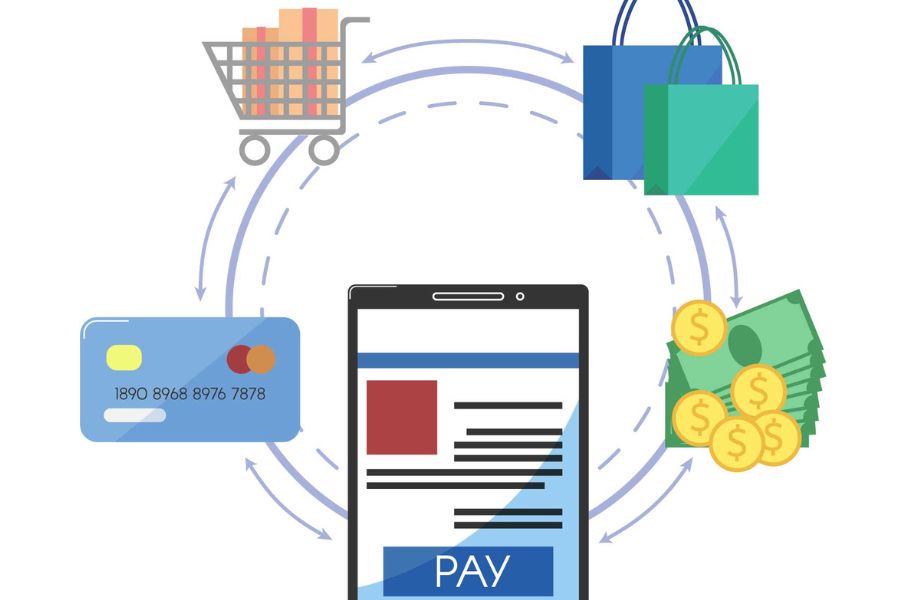Running a small business means constantly finding new ways to reach customers. A pop-up shop provides a chance to connect in person, showcase products, and increase sales without the high costs of a permanent store. The right POS systems for pop up shops make all the difference, ensuring smooth transactions, managing inventory, and keeping operations hassle-free. This checklist covers key factors to help businesses choose a system that fits their needs and supports growth.
Highlights:
- Pop up shops require fast setup, mobile-friendly operations, and seamless integration with online sales to maximize short-term opportunities.
- A good POS systems for pop up shops should support offline transactions, accept multiple payment methods, and be easy to transport and set up.
The Market of Pop Up Shops
The pop-up shop market is expanding quickly, bringing in up to $80 billion annually. Forecasts suggest that this figure will surpass $95 billion by 2025. More brands are turning to temporary retail spaces as an affordable way to reach customers, introduce new products, and create fresh shopping experiences.
Retailers recognize the value of this model, with 80% of those who have launched a pop-up viewing it as a success. More than half intend to set up another in the future. One reason for this growing interest is the lower cost—44% of pop-up shops require less than $5,000 to launch, making them a practical choice for businesses of all sizes.

Compared to traditional retail locations, pop-up shops involve lower rental expenses. The average cost for a retail space is $24.92 per square foot each month, while a mall location reaches $33.82. Short-term rentals allow businesses to enter high-traffic areas without long-term commitments. Since most pop-up shops operate for just a few days to two weeks, they provide flexibility while keeping financial risks lower.
Running a pop-up shop requires a way to handle sales efficiently. POS systems for pop up shops with cloud-based or mobile checkout capabilities enable businesses to process payments quickly, track inventory as items are sold, and accept various forms of payment, including contactless options. Synchronizing online and in-person transactions helps maintain accuracy and improve the shopping experience. Reliable payment processing plays a key role in making short-term retail setups run smoothly.
The Ultimate Expert Checklist for Choosing POS Systems for Pop Up Shops
Choosing the right POS system for a pop-up shop requires a careful look at business needs and the way transactions are handled. This checklist highlights key factors that help businesses select a system that suits short-term retail operations.
Core Functionality and Business Needs
POS systems for pop up shops should match the demands of a temporary store setup. Quick installation and ease of use allow businesses to start selling with minimal delays. Since pop-up shops may operate in locations with unreliable internet, an offline mode POS prevents disruptions. Real-time reporting helps track sales and customer preferences over a short period.
Flexibility in managing promotions and pricing plays a significant role. The system should support discounts, limited-time offers, and price adjustments without a complex setup. A connection to online stores keeps product availability accurate across different selling channels, preventing inventory errors and lost sales.
Hardware Considerations
A pop up shop benefits from lightweight and portable POS hardware. Traditional cash registers are bulky, so businesses often use tablets, mobile card readers, and wireless receipt printers. A touchscreen interface helps staff process sales quickly, keeping lines short. Durability matters, especially for outdoor events or locations with heavy foot traffic.
Battery life should not be overlooked. Many temporary retail spaces lack convenient access to power outlets. A system that runs for extended hours on a single charge avoids interruptions. Wireless connections between devices, such as Bluetooth and Wi-Fi, allow smooth communication between scanners, printers, and payment terminals. Having backup power sources prevents downtime during peak hours.
Payment Processing and Checkout Experience
A good pop up POS system accepts a range of payment options, including credit and debit cards, contactless payments, and digital wallets like Apple Pay and Google Pay. Offering various payment methods allows businesses to serve more customers and keep checkout lines moving. Stores in tourist areas may also benefit from accepting foreign currencies.
Security plays a major role in payment processing. POS systems for pop up shops should meet industry standards to protect customer data. Encryption and tokenization methods help keep transactions secure. Fast payment settlement allows businesses to access funds quickly, which is especially useful for short-term retail events.
Inventory Management and Stock Control
Keeping track of inventory in real-time helps businesses avoid running out of popular products or overselling items. POS systems for pop up shops that update stock levels automatically across sales channels reduce errors. Knowing what sells well allows for better planning of future pop-ups.
Low-stock alerts and quick restocking options help businesses stay prepared. Some systems connect directly with suppliers, making it easier to reorder fast-moving products. Sales data can also guide decisions on which items to prioritize for future events, improving overall performance.
Customer Engagement and Marketing Integration
Integrating customer engagement and marketing tools into a POS system can significantly benefit businesses. For instance, 86% of restaurants utilize POS data to inform discounting, loyalty programs, and marketing strategies. Additionally, 69% of restaurateurs consider integration with other systems, such as hotel management or accounting software, as the most important feature when evaluating new POS software.
Modern POS systems for pop up shops collect extensive data, including sales transactions and customer information, enabling businesses to segment customers based on demographics and purchase history. This segmentation allows for targeted marketing efforts, enhancing customer engagement and driving sales.
When businesses utilize these capabilities, businesses can create personalized marketing campaigns that resonate with specific customer segments, leading to higher conversion rates and increased customer loyalty.
Scalability and Future Growth
A POS system should keep up with business expansion. While a pop up shop may start as a single location, future events might require selling in multiple places at once. A system that supports unlimited users and devices allows businesses to grow without switching platforms. Cloud-based solutions help manage different locations from a single dashboard, making operations more flexible.
Integration with other sales channels makes long-term growth easier. A POS that syncs with an online store, marketplace listings, and social media sales prevents inventory mismatches. As businesses expand, adding new payment options, customer loyalty programs, and advanced inventory tracking becomes necessary. A system that adapts over time saves effort and resources in the long run.
For example, ConnectPOS integrates with Shopify POS, Magento, and BigCommerce, allowing retailers to manage both online and offline sales seamlessly. A system that adapts over time saves effort and resources in the long run.
Analytics and Performance Tracking
Understanding sales trends helps businesses make smarter decisions. A POS system that provides detailed reports on revenue, best-selling products, and customer behavior provides valuable insights. Real-time tracking helps businesses adjust pricing or promotions based on demand, ensuring that stock is used efficiently.
Looking at sales figures across different pop-up locations helps identify patterns. Certain areas may attract more customers, while specific dates bring higher traffic. Understanding these trends makes it easier to decide where and when to set up future events.
Analyzing peak and low-traffic hours helps with staffing and inventory planning. Adjusting employee schedules based on demand prevents under or overstaffing. Stocking up on popular products during high-traffic periods avoids missed sales opportunities.
Security and Compliance
Protecting customer information should be a priority. POS systems for pop up shops must comply with industry standards, such as PCI DSS, to safeguard payment data. End-to-end encryption ensures that transactions remain private, reducing the risk of fraud. Secure logins and user permissions prevent unauthorized access to sensitive business information.
Compliance with tax regulations and reporting requirements is just as important. The system should automatically apply the correct sales tax based on location, ensuring accuracy. If a business expands to international markets, handling different tax rates and currencies without manual adjustments makes operations smoother.
Cost, Pricing, and ROI Considerations
Choosing a POS system involves more than just the upfront cost. Subscription fees, hardware expenses, and payment processing charges all affect the overall investment. A clear breakdown of costs helps businesses compare options and avoid unexpected charges.
Return on investment depends on how well the system supports sales and operations. Faster checkout speeds, accurate inventory tracking, and better customer engagement all contribute to higher revenue.
POS systems for pop up shops that reduce manual work and improve efficiency pay for themselves over time. Businesses should balance affordability with long-term benefits to find the best fit.
Common Traps when Selecting A POS System for a Pop Up Shop
Many businesses make mistakes when selecting a POS system, often due to overlooking key factors like payment processing options, internet dependence, hidden costs, and customer support. Being aware of these potential pitfalls helps retailers avoid costly errors and ensures smooth operations throughout the pop-up event.
- Overlooking Compatibility with Business Needs – Some POS systems are designed for permanent stores and may not work well for short-term events. A lack of integration with online stores, accounting tools, or marketing software can create extra manual work and disrupt operations.
- Ignoring Payment Flexibility – Limited payment options, such as excluding digital wallets or contactless methods, can turn customers away. Some systems with low upfront costs may have high transaction fees, reducing overall profits.
- Underestimating Internet Dependence – Many POS systems rely on an Internet connection to process transactions. Without an offline mode, sales could be delayed or lost in locations with weak connectivity.
- Overlooking Hidden Costs – Monthly fees, software updates, and extra charges for analytics or multi-location support can increase expenses. Some systems also require specific hardware, adding to the total investment.
Neglecting Customer Support and Reliability – Slow response times or limited support hours can cause disruptions, especially during peak sales periods. Testing customer service before committing helps avoid unexpected downtime.
ConnectPOS – Top tailored POS system for Pop up Shops
Pop up shops thrive on speed, adaptability, and efficiency, requiring POS systems that keep up with rapid transactions and fluctuating inventory. ConnectPOS delivers a robust solution designed to support temporary retail setups, facilitating smooth operations from setup to checkout.
- Quick Setup for Instant Sales: Pop up shops run on tight schedules, and ConnectPOS gets businesses up and running without delays. A cloud-based system eliminates the need for complex installations, allowing sales to start in minutes.
- Smart Inventory Control: Managing stock across locations is simple with ConnectPOS. Real-time updates prevent overselling and keep track of available items.
- Flexible Payment Options: Customers expect convenience when making a purchase. ConnectPOS supports card payments, digital wallets, split transactions, and contactless methods, giving shoppers a range of choices. The system also handles deposits and partial payments to suit different buying preferences.
- Customer Relationship Management (CRM) Tools: Building strong customer connections is easier with built-in CRM POS capabilities. ConnectPOS records shopping habits, preferences, and past purchases, making it easier to create personalized promotions and loyalty rewards.
- Business System Integration: Pop up shops work best when connected to a larger retail strategy. ConnectPOS syncs with eCommerce platforms, accounting tools, ERP software, and payment providers, keeping everything aligned without extra effort.
- Unified Shopping Across All Channels: A pop up shop should feel like an extension of a brand’s overall experience. ConnectPOS brings together online and offline sales, keeping transactions, customer data, and inventory updates in sync.
- Mobile POS for Sales Anywhere: Pop up locations change frequently, and a mobile POS system keeps transactions moving. ConnectPOS works on tablets and smartphones, allowing sales to happen anywhere – at a market, a festival, or a temporary storefront.
- Built for Growth: Pop up shops are a great way to experiment with expansion. Whether launching a single event or running a series of temporary stores, ConnectPOS scales to match business needs, supporting short-term sales while paving the way for long-term success.
With ConnectPOS, businesses can create a seamless shopping experience, maintain accurate inventory, and maximize sales opportunities in any temporary retail space.
FAQs: POS Systems for Pop up Shops
Can POS systems for pop up shops handle multiple locations?
Yes, the right system should allow businesses to track sales and inventory across various locations in real-time, preventing overselling and stock discrepancies.
What payment options should a pop up POS support?
Flexibility is key. The system should process credit and debit cards, digital wallets, contactless payments, and split transactions to meet different customer preferences.
Is mobile POS necessary for pop-up shops?
Since pop-up shops are temporary and flexible, a mobile POS on tablets or smartphones allows businesses to process transactions anywhere, from events to street markets.
Conclusion
Pop up shops create opportunities to connect with customers, experiment with new ideas, and grow brand presence without long-term commitments. Selecting pos systems for pop up shops that align with business needs ensures smooth operations and maximizes results. The checklist covers key factors to consider, which businesses can base their decisions on to make informed decisions without overlooking important details.
Among the solutions for pop-up shops, ConnectPOS can be a smart choice, providing a practical system that simplifies sales, inventory, and customer management. Equip your next pop up with ConnectPOS to streamline operations and turn every interaction into a valuable opportunity. Contact us to know more details!
ConnectPOS is a all-in-one point of sale solution tailored to meet your eCommerce POS needs, streamline business operations, boost sales, and enhance customer experience in diverse industries. We offer custom POS with features, pricing, and plans to suit your unique business requirements.




